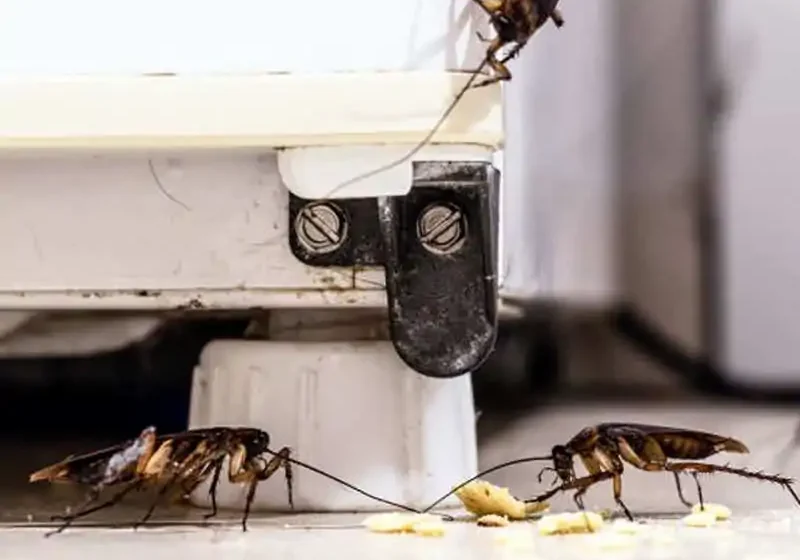Seasonal Pest Problems: What to Expect This Fall and Winter (and How to Prepare)

As the weather cools and the days get shorter, many people look forward to the cozy comforts of fall and winter. Unfortunately, pests feel the same way—only their idea of cozy involves settling into your home, garage, attic, or business.
While many pests are more active in spring and summer, fall and winter bring a different kind of challenge: overwintering pests looking for shelter, warmth, and food. If you’re not prepared, you could find yourself dealing with unwanted guests during the coldest months of the year.
Here’s what you need to know about seasonal pest activity in fall and winter—and how to protect your property before it’s too late.
Why Pests Invade in Colder Months
When temperatures drop, pests like rodents, cockroaches, spiders, and even some insects begin looking for warm, sheltered environments where they can survive until spring. Homes, apartment buildings, and commercial properties offer ideal conditions: heat, moisture, and plenty of food sources.
While you may not see as many bugs out in the open, that doesn’t mean they’re gone—it usually means they’re hiding inside.
Common Fall and Winter Pests
Here are some of the most active and troublesome pests to watch for during the colder months:
1. Rodents (Mice and Rats)
Mice and rats are notorious for sneaking indoors during fall. They can squeeze through tiny openings—mice need just a quarter-inch gap—to access food, warmth, and nesting materials.
Signs to watch for:
- Droppings in cabinets or along baseboards
- Scratching noises in walls or ceilings
- Chewed wires, insulation, or food packaging
2. Cockroaches
Roaches thrive in warm, moist environments, so they often move indoors as temperatures drop. Once inside, they can multiply quickly and contaminate food and surfaces.
Signs to watch for:
- Musty odor
- Droppings that look like pepper or coffee grounds
- Sightings near drains, behind appliances, or in basements
3. Spiders
While most spiders are harmless and even helpful, they often move inside during colder months in search of warmth. Some species, like the brown recluse, can pose a danger if disturbed.
Signs to watch for:
- Webs in corners, basements, or garages
- Increased spider sightings around windows or doors
4. Silverfish and Earwigs
These pests seek out dark, damp areas like basements and bathrooms. They feed on paper, fabrics, and stored foods, and can become a real nuisance during fall and winter.
Signs to watch for:
- Small, fast-moving insects
- Damage to wallpaper, books, or cardboard boxes
5. Overwintering Insects (Stink Bugs, Boxelder Bugs, Ladybugs)
These insects don’t reproduce indoors, but they invade homes in large numbers to survive the winter. You’ll often find them clustering around windows or inside attics and wall voids.
Signs to watch for:
- Large numbers of bugs near sunny windows or ceiling lights
- Bugs crawling out of walls, light fixtures, or vents
How to Prepare Your Home or Business for Cold-Weather Pests
Now is the time to take preventive measures. Once pests are inside, they’re harder to remove—and can cause damage or health concerns if left unchecked.
1. Seal Entry Points
Inspect your home or building for cracks, gaps, and openings:
- Use weatherstripping on doors and windows
- Seal gaps around pipes, vents, and utility lines
- Install door sweeps and screen attic vents
Even small openings can be an open invitation to pests.
2. Declutter and Deep Clean
Pests love cluttered, dark spaces. Clean out storage areas, basements, and garages:
- Eliminate cardboard boxes and use sealed plastic containers instead
- Clean behind appliances and inside cabinets
- Store pet food in airtight containers
3. Fix Moisture Issues
Many pests are drawn to moisture. Check for and repair:
- Leaky faucets or pipes
- Poor ventilation in basements and bathrooms
- Clogged gutters and downspouts
Use dehumidifiers if needed in damp areas.
4. Inspect Firewood and Decorations
Seasonal decor and firewood can carry pests indoors.
- Store firewood at least 20 feet from your home
- Shake out wreaths, trees, or boxes that have been stored in the garage or attic
5. Schedule a Preventive Pest Inspection
Even if you don’t see signs of pests, a professional inspection can catch early issues and apply treatments to prevent infestations.
Experienced pest control technicians can:
- Identify vulnerable areas
- Apply perimeter treatments
- Install rodent bait stations or traps
- Recommend long-term prevention strategies
Final Thoughts
Fall and winter pests are sneaky, quiet, and determined. By the time you see signs of an infestation, the problem may already be well established. But with a proactive approach, you can keep your space pest-free all season long.
Don’t wait for pests to make themselves at home—take steps now to secure your property, protect your health, and avoid costly infestations.
If you’re unsure whether your home is properly protected, consider reaching out for a seasonal inspection. The peace of mind is worth it. We recommend Positive Pest Management.





